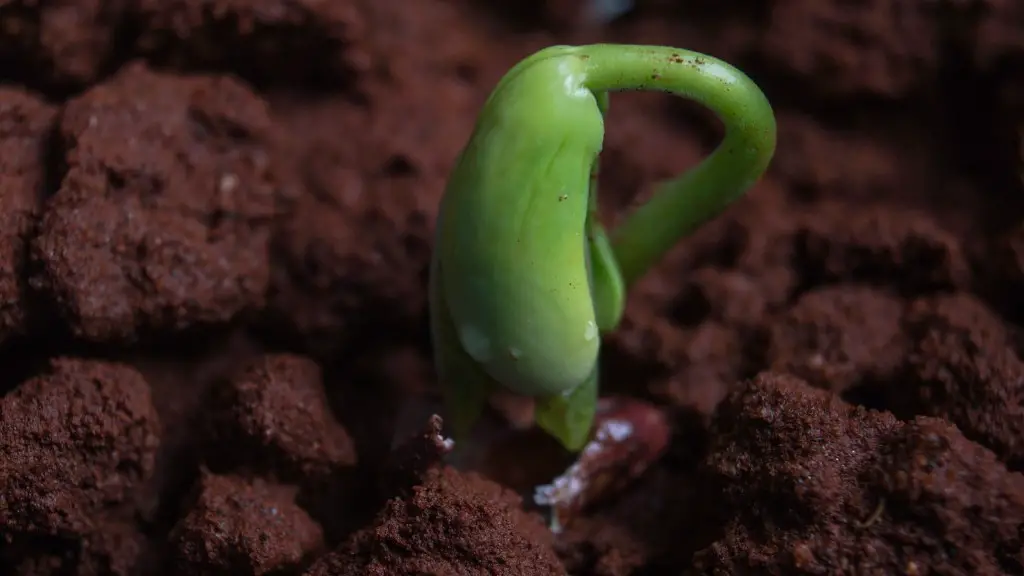What Is Regeneration In Agriculture?
Regenerative agriculture is an agricultural system which seeks to restore and maintain vibrant, thriving ecosystems through regenerative actions such as reducing and eliminating tillage, planting cover crops, and utilizing composting and rotational grazing. It is based on the beliefs that soil health is essential for the productivity of the land, and that healthy soil produces healthy, nutritious food. Regenerative agriculture helps to increase soil fertility, soil structure, and ultimately yields, while also reducing the impacts of climate change and improving the economic resilience of farmers and producers. By focusing on rebuilding soil health, farmers can produce healthier and more nutrient dense food for their communities.
Regenerative farming practices have been used for centuries, but are becoming increasingly popular in today’s farming environment. This is due to their ability to mitigate climate change and reduce the need for chemical inputs, while still producing high-quality foods. Through the use of cover cropping, rotational grazing, composting, and reduced tillage, farmers can build soil health and fertility, improve nutrient cycling and water retention, and create more resilient ecosystems. By providing long-term benefits to the land and local communities, regenerative agriculture has the potential to lead to greater economic, environmental, and social stability.
One of the most important components of regenerative agriculture is a focus on the soil, as the foundation of any healthy agricultural system. soil health can be improved through the use of cover crops and organic matter, both of which help to increase fertility, improve water retention, and facilitate the breakdown of nutrients for plants to use. Cover Crops also help to reduce erosion, control weeds, and reduce nutrient leaching. Additionally, composting can improve soil texture and fertility, as well as help to reduce water stress and improve carbon retention.
Rotational grazing is another important component of regenerative agriculture. This method of livestock management rotates animals around pastures, which allows pastures to rest and replenish nutrients. By rotating the animals, they are able to graze different sections of the pasture, which helps to reduce overgrazing and improve soil health and fertility. Additionally, animals are able to convert non-edible grasses into nutritious food, which not only reduces feed costs, but it also helps to increase the overall rate of soil fertility.
No-till, or reduced tillage, is a practice that has been gaining popularity in recent years as an important component of regenerative agriculture. By reducing or eliminating tillage, the soil is able to remain intact and retain more moisture, nutrients, and organic matter. This reduces soil erosion and can improve crop yields and the overall environmental health of the land. No-till can also help to increase the soil’s water-holding capacity, reduce runoff, and increase beneficial organisms that improve soil health and fertility.
Regenerative agriculture has the potential to revolutionize the way we produce food, reducing the environmental impact of industrial agriculture and improving the economic and social stability of rural communities. By focusing on soil health, water and nutrient retention, and reducing tillage and chemical inputs, regenerative agriculture can help to create more resilient, nutrient-dense, and sustainable food systems.
Benefits Of Regenerative Agriculture
Regenerative agriculture has a number of benefits, both economically and environmentally. It supports local farmers and communities by preserving soil health, preventing erosion, and retaining water and nutrients. By using cover cropping, rotational grazing, and manure composting, farmers are able to increase soil fertility, reduce runoff, and reduce chemical input costs. Additionally, as regenerative farming practices become popularized, more farmers can expand their markets and increase their economic stability.
From an environmental perspective, regenerative farming can improve water retention and reduce erosion, which can help to mitigate flooding. Additionally, soil health in a regenerative system is improved, leading to more efficient nutrient cycling and increased carbon sequestration. Finally, regenerative agriculture has the potential to reduce the impacts of climate change, both through the addition of organic matter to the soil, and through locked-in carbon from sequestration.
Overall, regenerative agriculture has the potential to revolutionize the way we produce food and sustain healthy farm ecosystems. By prioritizing soil health and minimizing the need for chemical inputs, it can lead to healthier, more nutrient-dense foods and more resilient, sustainable agricultural systems.
Organic Regenerative Agriculture
Organic Regenerative agriculture uses the same principles as traditional regenerative farming, with an emphasis on organic inputs and practices. Organic regenerative farming focuses on building soil health and fertility through the use of compost, cover crops, and rotational grazing. Organic inputs such as manure compost, green manures, and cover crops are used to increase soil fertility, improve the quality of soil water, and ultimately improve the yields of crops. Additionally, organic farming allows farmers to produce healthy, toxin-free produce without the use of synthetic chemicals or fertilizers.
Organic regenerative systems have the potential to improve local food production in a way that is not only economically viable, but also socially and environmentally responsible. By incorporating organic practices into regenerative agriculture, farmers can produce nutritious, healthy produce while also improving soil health and fertility. In addition, organic regenerative systems can produce higher yields of crops, reduce the need for chemical inputs, and increase the overall economic and environmental stability of rural communities.
Organic regenerative agriculture also has the potential to mitigate the effects of climate change. By improving soil health through the introduction of organic matter, regenerative agriculture has the potential to sequester large amounts of carbon from the atmosphere and reduce the need for energy-intensive inputs and fertilizers. Additionally, the introduction of more resilient crops, adapted to the effects of climate change such as prolonged droughts and floods, can increase local food security and fortify local communities against future climate-related disasters.
Challenges Of Regenerative Agriculture
While regenerative agriculture offers a number of benefits, there are also some challenges that need to be addressed. One of the most common challenges is the transition from traditional farming systems to regenerative agriculture. This transition can be time-consuming and costly, as farmers will need to invest in new equipment and practices, and find markets for their new produce. Additionally, the cost of organic inputs can be expensive, and the available land for cover crops can be limited. There can also be challenges with the implementation of rotational grazing, due to the need for varied pastures, or the use of no-till techniques, which requires specialized equipment.
In addition to these challenges, regenerative agriculture raises some ethical concerns. The use of animal manure as a soil amendment can be controversial, as some may argue that it is unethical to use animal products for agricultural purposes. Additionally, farmers may face opposition from local communities who view regenerative methods as unnatural. Finally, regenerative agriculture can require a large amount of land, which can be prohibitive for small-scale farmers.
Regenerative agriculture is a complex system, and it may take some time for farmers to make the transition from traditional farming methods. However, the long-term benefits of regenerative agriculture, both economically and environmentally, have the potential to outweigh the challenges. Through the use of cover crops, rotational grazing, composting, and reduced tillage, farmers can create more resilient ecosystems and build healthier, more sustainable food systems.
Tools For Regenerative Agriculture
Regenerative agriculture requires specialized tools, practices, and technologies to enable farmers to transition to regenerative farming without compromising their yields. These tools range from the high tech to the simple, such as the use of no-till implements, cover crop seeding equipment, and irrigation systems. Additionally, there are a number of conservation practices, such as agroforestry, crop rotation, and nutrient management which can significantly reduce inputs and boost yields. Finally, there are a range of digital tools, such as precision agriculture, that enable farmers to effectively manage their land, increase efficiency, and improve yields.
The transition to regenerative agriculture can seem daunting for farmers, but there are a number of resources available to help them succeed. Conservation districts, state and local governments, and non-profits are often good places to find assistance with transitioning to regenerative systems. Additionally, farmers can find many tools and resources online, such as books, websites, blogs, and videos, to help them learn more about regenerative farming and transition to these systems.
Regenerative agriculture has the potential to revolutionize the way we produce food, but it requires specialized tools, conservation practices, and digital technologies to enable farmers to make the transition. Through the use of these tools, farmers can minimize inputs, increase yields, and create more resilient ecosystems, while also reducing the impact of climate change and improving their economic and social stability.
Markets For Regenerative Agriculture
The most successful regenerative agriculture farms are those that are able to find markets for their products. Many regenerative farmers are turning to direct-to-consumer markets, such as farmers markets, restaurants, and online stores, to find buyers for their produce. Additionally, many regenerative farmers are working with local institutions, such as schools and hospitals, to provide them with fresh, healthy food. These relationships can provide a steady stream of income and can help to build trust and loyalty with customers.
Regenerative farmers are also making use of grant programs and crowdfunding, such as Kickstarter and Indiegogo, to finance their transition to regenerative practices. Additionally, there are a number of government programs that can provide financial assistance for farmers looking to make the transition. Finally, many farmers are turning to social media to find buyers for their produce and spread awareness about regenerative agriculture.
The transition to regenerative agriculture can be a costly and time-consuming process, but with the help of the right financing, tools, and markets, farmers can successfully make the transition and build healthy, resilient ecosystems that produce nutritious, delicious food. The key to successful regenerative agriculture is finding the right markets, using the right tools, and securing the right financing to make the transition and ensure success.





